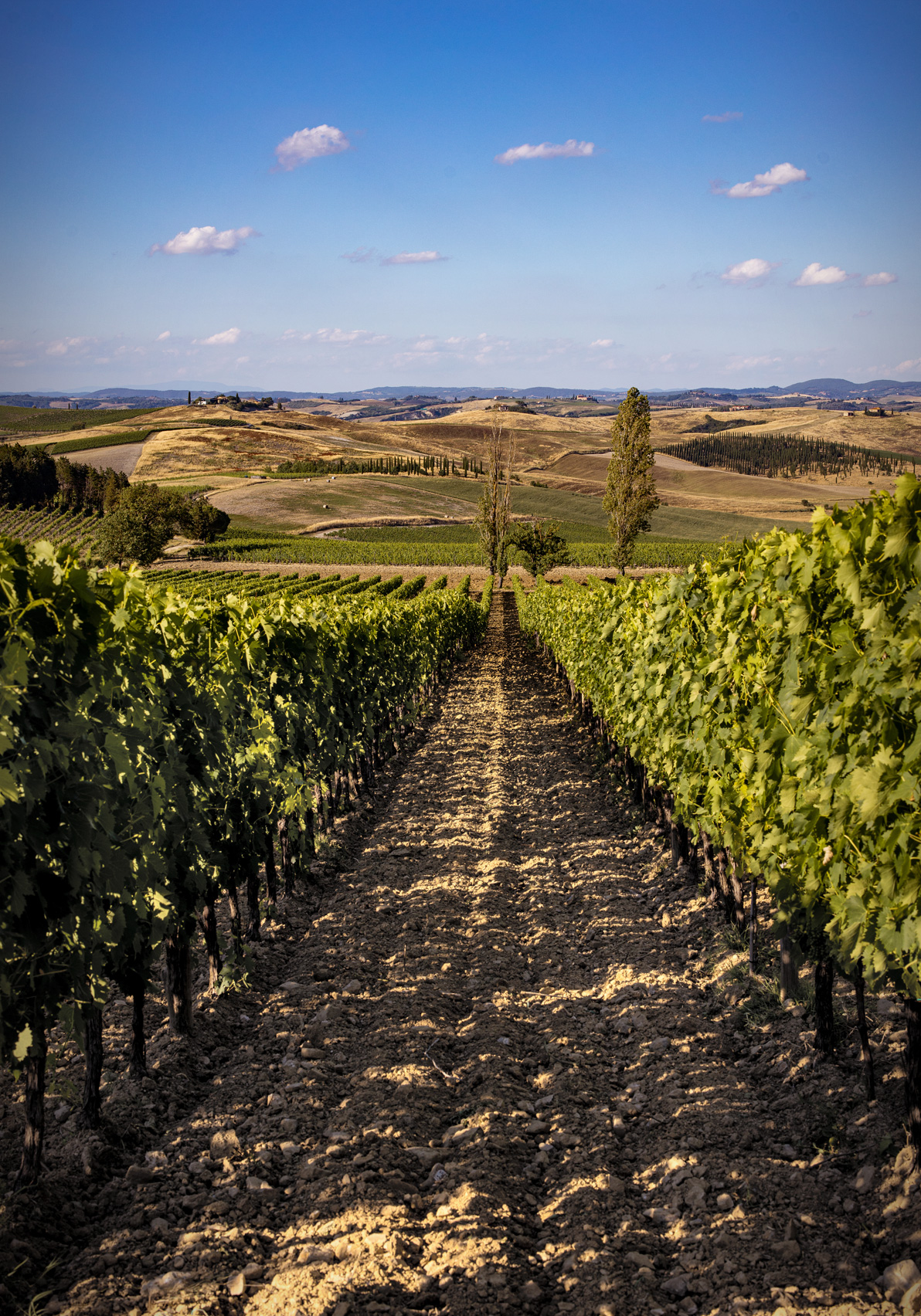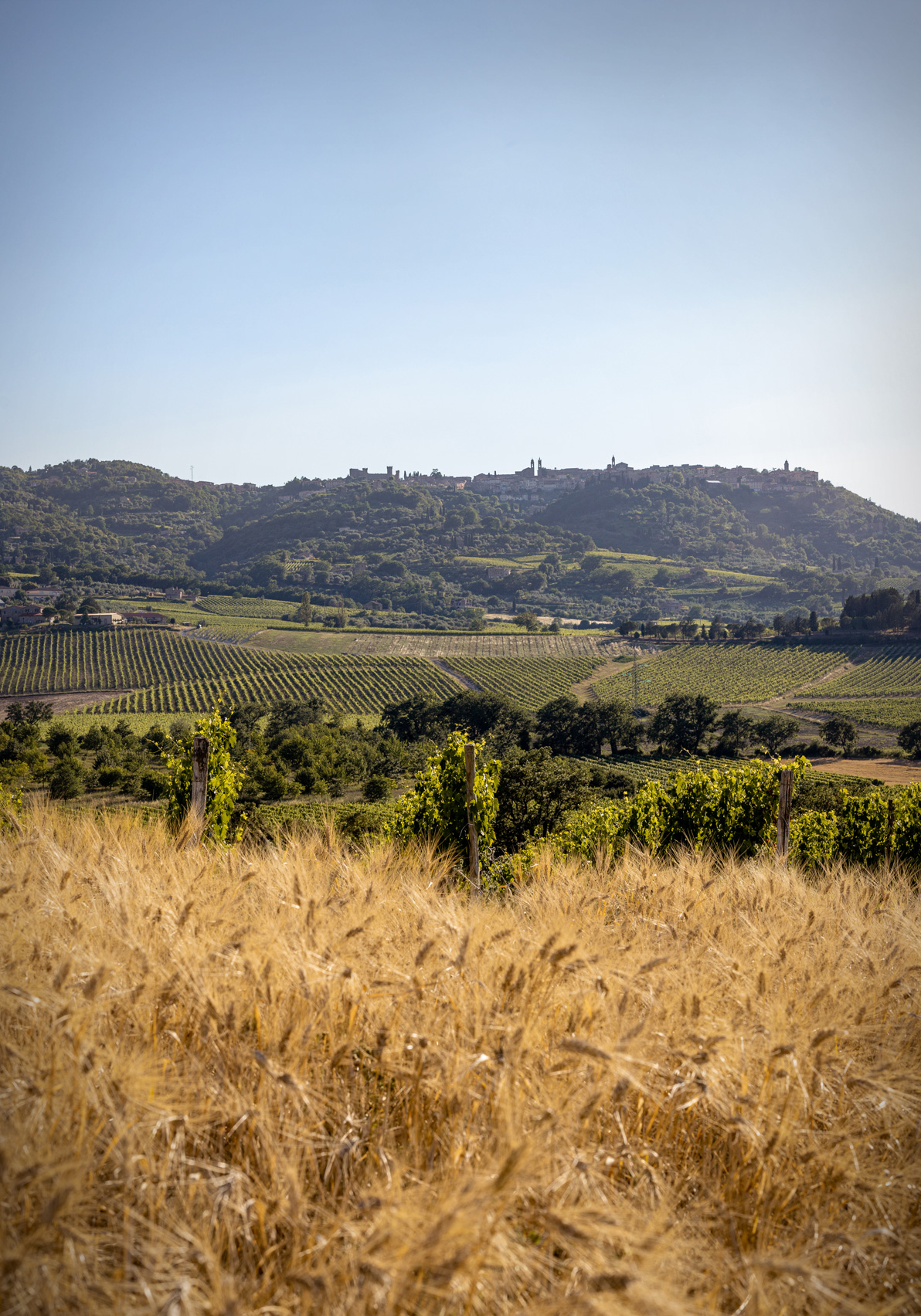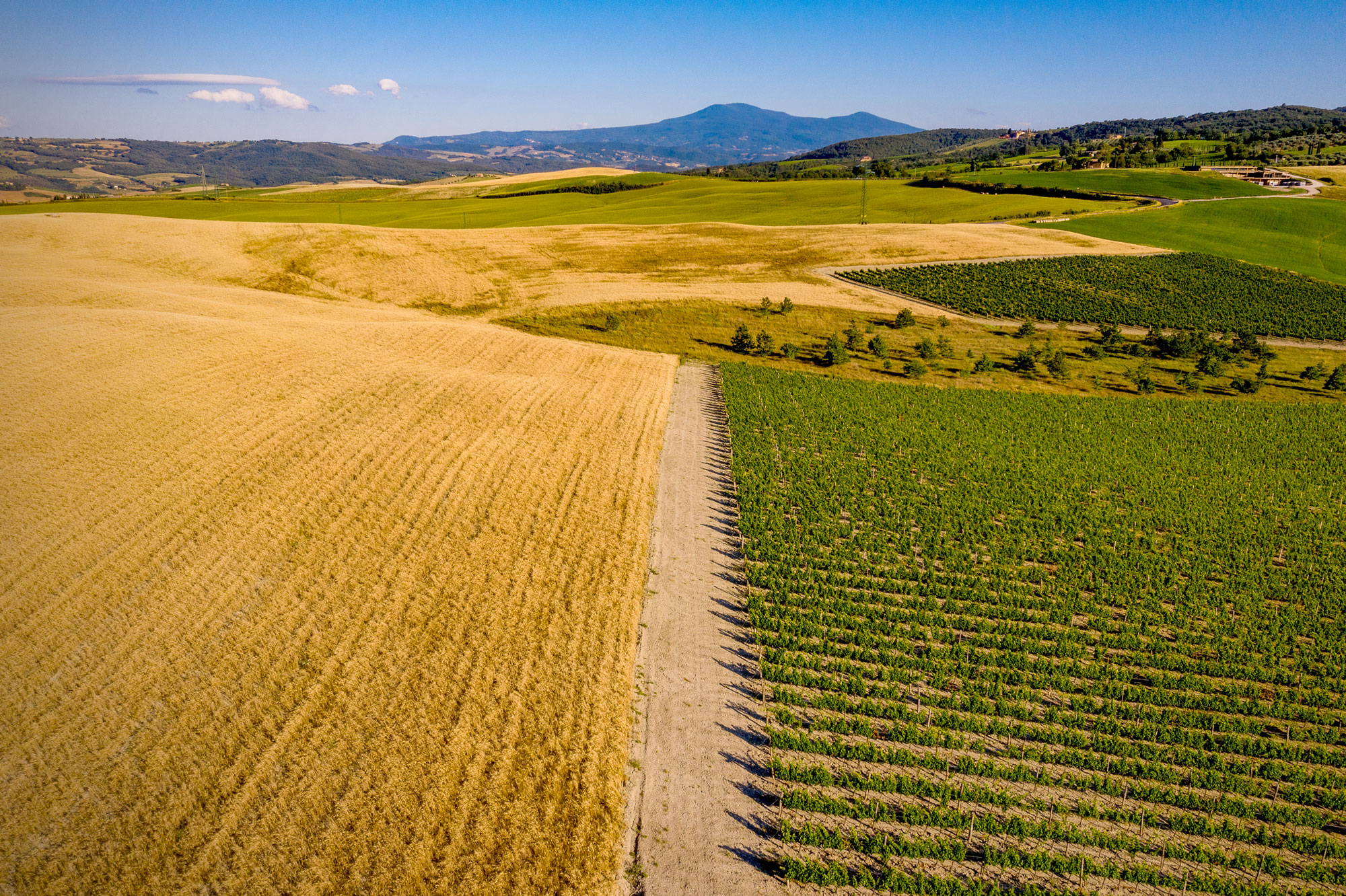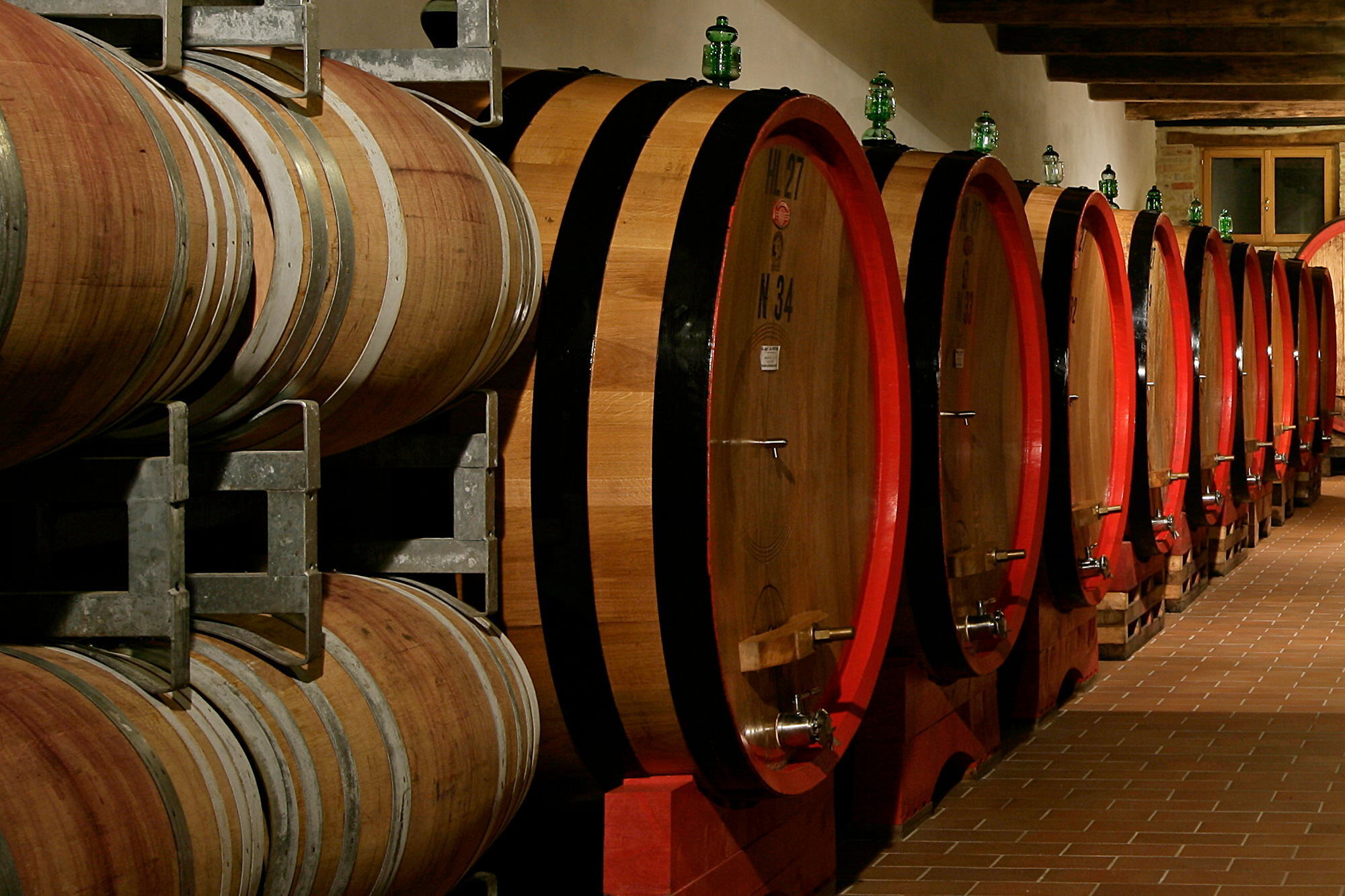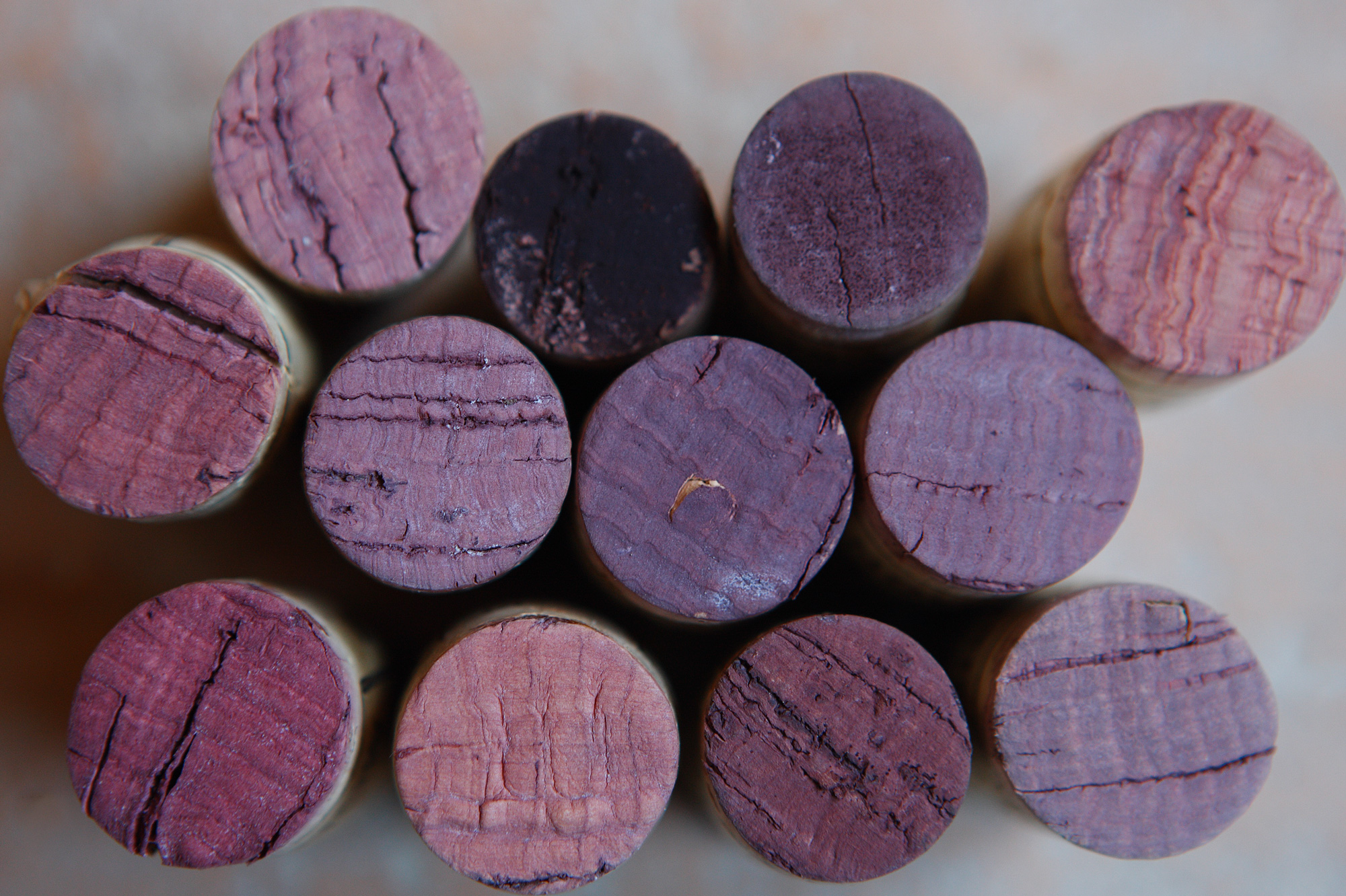Sangiovese terroir
La Fortuna estate covers forty hectares
and is divided into two bodies: the northwest area, below the hill of the historic center of Montalcino, and the south area, near the Castelnuovo dell'Abate village with the vineyards overlooking the Alta Maremma.
The main part where the farm center is located is on the northwest side, surrounded by the beautiful UNESCO heritage landscape of hills, vineyards, and olive trees. The company owns thirteen hectares of vineyard land here, to which other five hectares planted on the southern slope are added
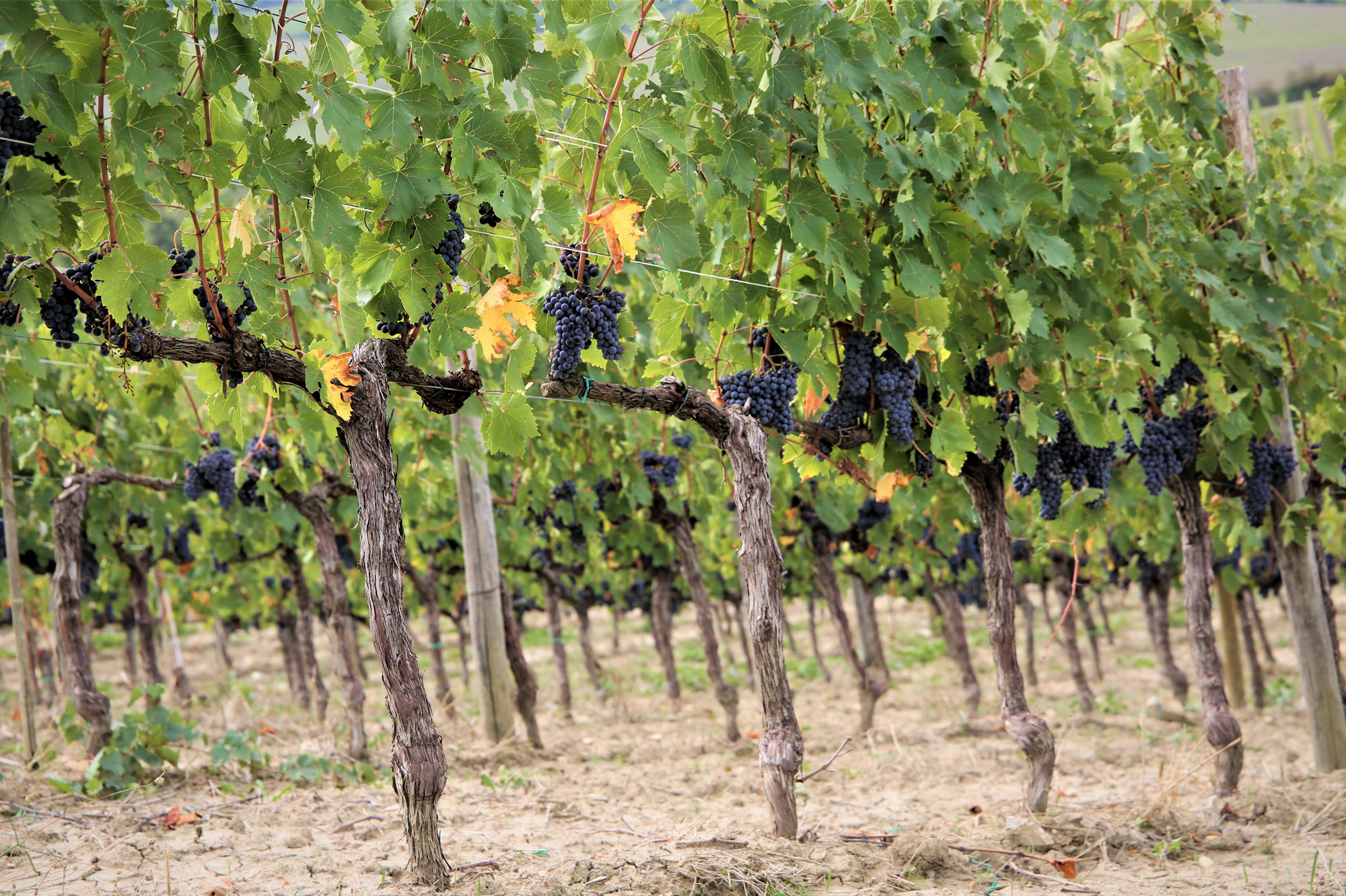
The total eighteen hectares are between ten and thirty years old and are all currently trained to bilateral spurred cordon, of which thirteen and a half hectares are registered for the production of Brunello di Montalcino, two for the production of Rosso di Montalcino, two for the production of Sant'Antimo, and the remaining for the production of I.G.T.

